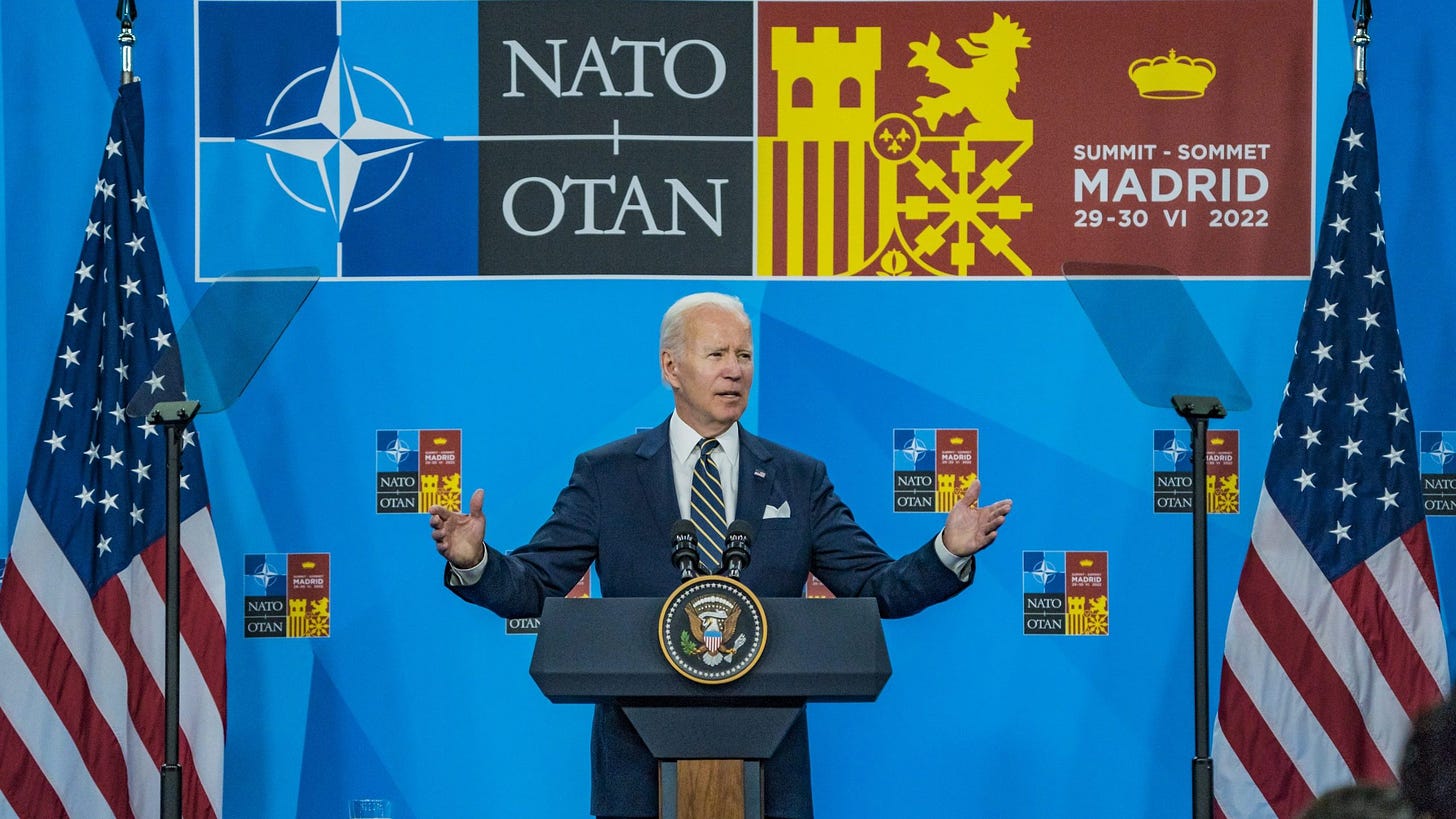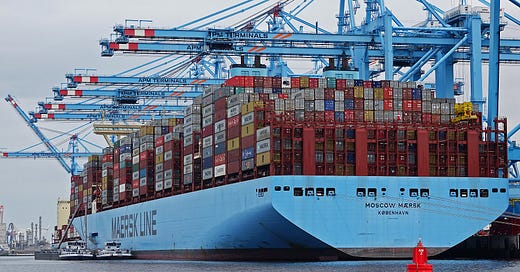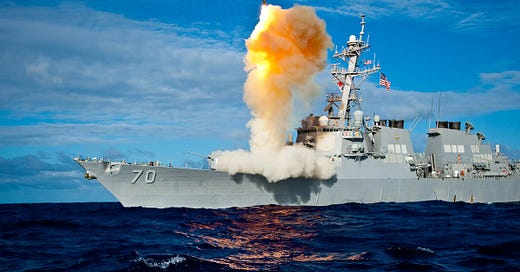

Discover more from Weapons and Strategy
“Any decision on NATO membership is between the 31 Allies and aspirant country. And so, in this case, when it comes to Ukraine, we have been discussing with our NATO Allies and Ukraine how we can collectively support Ukraine’s aspiration for Euro-Atlantic integration.”
“Ukraine would have to make reforms to meet the same standards as any NATO country before they join [NATO]. President Biden thinks that Ukraine can do that,” she added.
President Biden will spend three days in Europe at the NATO Summit in Vilnius scheduled for 11 and 12 July. The main topic will be Ukraine and where to go from here.
Ukraine is pushing either for immediate NATO membership or actionable security guarantees from NATO. But Ukraine's position is undermined by the failure of the counteroffensive against Russia, and failure of its attempts via sabotage, assassination and lethal drones aimed at the Kremlin, to destabilize the Putin government. Now Ukraine is saying it needs NATO air power to be able to win its war.
It will be very hard to get a NATO consensus on the road ahead, no matter how much arm twisting Washington uses on its European partners.
Europe is already in a recession thanks to both the COVID catastrophe, to the sanctions on Russian energy and the huge unemployment levels, impacting recent immigrants. The impact of all that is social unrest across Europe. France is already experiencing a serious revolt, and while the French situation has eased in the past few days, it will come back. Meanwhile the German government coalition is steadily losing popular support and the AfD, Germany's right wing party, is now the second most popular party in the country. Sholtz and his coalition partners don't know what to do: they may try banning AfD as a last ditch effort. Italy is also far from out of the mess, as the country already has a conservative leadership but is being battered by unprecedented waves of immigrants coming from the Middle East.
Europe is out of money and out of bullets. It is not in a mood to give a blank check to Ukraine or risk a bigger war that might spread into Europe.
President Biden will have a hard time trying to squeeze more from the Europeans. Biden knows that he cannot unilaterally use US forces, especially airpower, without airbases and supply centers in Europe. Right now Washington has a free hand because US warplanes are not bombing Russian positions in Ukraine. Doing that, however, will force a strong European reaction and shatter NATO. Zelensky has been pressuring Washington for advanced warplanes, saying airpower would make it possible for Ukraine to win. But the only practical way forward over the next year is to operate from bases outside of Ukraine using US, possibly other NATO, aircraft. This will certainly mean war in Europe and the currently ruling governments in Europe either would have to say no or face being removed by force. It is, therefore, an unlikely, if highly dangerous, scenario.
Washington has already signaled that it has been unable to convince its partners about Ukrainian NATO membership. It is likely that behind the scenes Washington is trying to craft some sort of security guarantee for Ukraine, but any meaningful guarantee is probably a bridge too far.
Russia is also restive after the Prigozhin-led coup attempt. Putin wants a military victory soon, as does the Russian army which was badly stressed by the Prigozhin accusations. Holding the line against a Ukrainian counter-offensive is not really a victory for the Russians since their image remains tarnished at home. It is reasonable to expect, therefore, that once the Ukrainian losses mount up high enough in the coming weeks, that the Russian army will make dramatic offensive moves against Ukraine. The big unknown is what the Russian army will do --will it launch a big attack on Kiev, on Kharkiv or Odessa? If, after Vilnius, Russia sees Zelensky without any expectation of NATO coming to save him, they will exploit the situation very quickly.
Part of the Western foundation for Ukraine's offensive was the introduction of modern technology on the battlefield, represented especially by the appearance of the Leopard tank. Unfortunately for NATO, the Leopard tanks have not saved the day for Ukraine. So far, between 16 and 20 Leopards have been knocked out on the battlefield along with lots of other NATO-supplied armor including infantry fighting vehicles such as the US Bradley and mine clearing systems like the Finnish Leopard 2R HMBV and the German Wisent 1.
Leopard, along with the US Abrams main battle tank, form the armor backbone of NATO's land defense. While the US and its allies have superior airpower, they have sparse and inadequate air defenses compared to what Russia can bring forward. That means that a land defense needs to stand up to Russian artillery, attack helicopters armed with missiles, lethal drones and air launched mines.
The failure of the Leopard in Ukraine represents a huge challenge for NATO and signals that the current NATO "tripwire" strategy may not work. Under the tripwire paradigm, the idea is that an initial Russian attack (most likely in the Baltic states because Russian forces are very close to Estonia and Latvia) can be held for some days while the US ships heavy forces into Europe. But if the tripwire is illusory, then NATO is exposed to rapid Russian advances in Europe should an attack be launched. The bottom line is that NATO's strategy needs revision or, alternatively, that the Europeans and Russians work out a mutually acceptable security arrangement. It is exactly such an arrangement that Russia proposed to NATO in December, 2021 and which was rejected without discussion.
Now the ammunition cupboard is bare, even in the United States. The Russians are learning how to counter advanced western systems, a negative development for NATO's security. It could not be a worse time to risk Europe's security on the basis of being able to stop a Russian attack. It may be easy for British politicians to scream they want NATO to fight in Ukraine, but it isn't London that is likely the first target of Russia's missiles. Cracks in the alliance are emerging more quickly than anticipated, and Europe's weak governments are in trouble.
It will be interesting to see how Vilnius plays out. It will certainly be a propagandistic show, but there is a good chance Vilnius will be a flop.
















"The bottom line is that NATO's strategy needs revision or, alternatively, that the Europeans and Russians work out a mutually acceptable security arrangement. It is exactly such an arrangement that Russia proposed to NATO in December, 2021 and which was rejected without discussion."
Yup, this could have all been avoided a year and a half ago. But the clown-show that is the Biden administration wanted in the worst way a kinetic response from Russia so that they could justify stopping the standup of the Nordstream II pipeline and begin to economically decouple Europe (meaning Germany) from Russia. The USA is deeply complicit in setting the stage for this totally unnecessary war.
Let us see whether the Europeans get some backbone and begin to do what is in their interests, rather than the interests of the war mongers in Washington. We should know by the end of next week.
thanks...
dismantle nato... nato is the cause of all of this and of course nato is a cia creation for use against russia... a cold war relic that the war, banking and energy industries have held dearly for fear of losing their position at the front of the trough.. without nato things would go back to normal...a lot of people, thanks the western msm corporate run media - continue to be fooled by this... russia has no need to hurry anything... nato has its own self destruct module built inside of it since its inception..